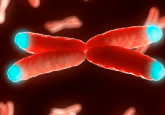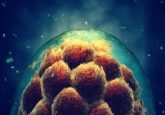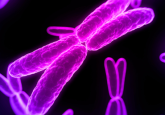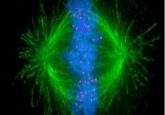A map to the center of the cell
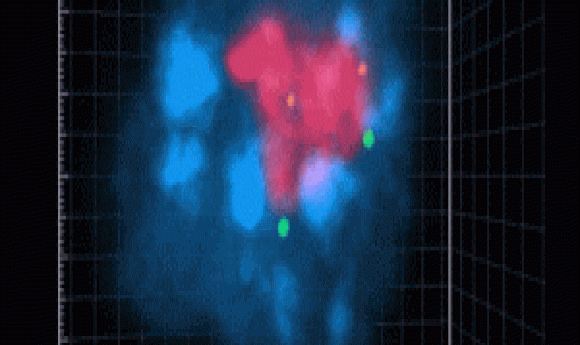
The components of the nucleus have been mapped out with a new 3D model.
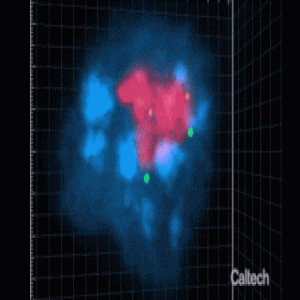
A 3D model of the nucleus made with SPRITE: DNA regions in the “inactive hub” on chromosomes 15 (orange) and chromosome 18 (green) coming together around a large nuclear body in the nucleus (blue) called the nucleolus (red). Credit: Guttman laboratory / Cell
Researchers from the California Institute of Technology (CA,USA) have unraveled the mystery of how the genome is organized inside the nucleus. They were able to create a 3D map with the new technique that involves construction of the organization of the genome by modeling the space of the nucleus, including DNA and nuclear bodies. The results, published in Cell, provide great insight to the many interactions of the nucleus that rely on this 3D structure, from gene expression to RNA and protein production.
Many of the genetic processes that occur in the cell require access to specific genes within the nucleus. Often it is the 3D structural environment that DNA finds itself in that permits access of other molecules to genes. Lots of these processes, such as stem cell development though gene expression, are all a natural part of a cell’s function. However, many diseases and cancers also alter DNA, so understanding and identifying the areas in which these DNA alterations occur is important to finding treatments for these diseases.
To model the nucleus, the researchers identified the different complexes found within and gave them each identifying barcodes. This allowed any interaction between the same or different barcodes to be traced and mapped. The team called their technique split-pool recognition of interactions by tag extension (SPRITE).
The project was led by first author Sofia Quinodoz, whose team used the tool to focus primarily on inactive genes on chromosomes, which cluster around the nucleolus.
“With SPRITE, we were able to see thousands of molecules – DNAs and RNAs – coming together at various ‘hubs’ around the nucleus in single cells. Researchers theorized that each chromosome is kind of on its own, occupying its own ‘territory’ in the nucleus. But now we see that multiple genes on different chromosomes are clustering together around these bodies of cellular machinery. We think these ‘hubs’ may help the cell keep DNA that are all turned on or turned off neatly organized in different parts of the nucleus to allow cellular machinery to easily access specific genes within the nucleus,” explained Quinodoz.
